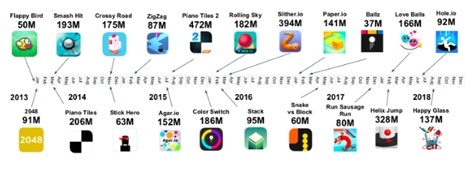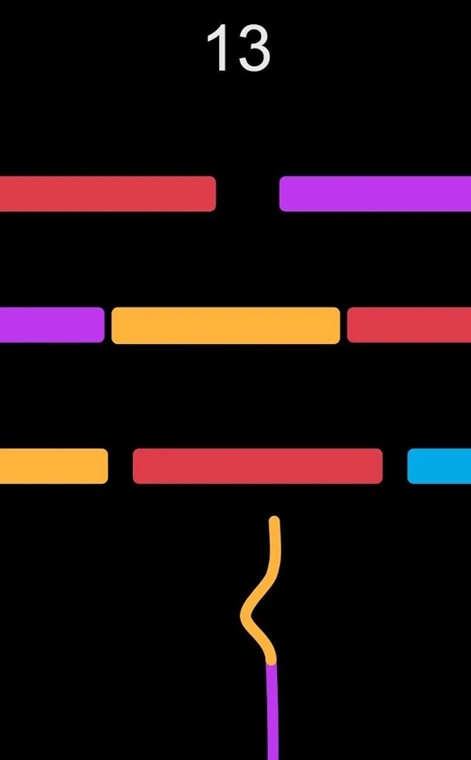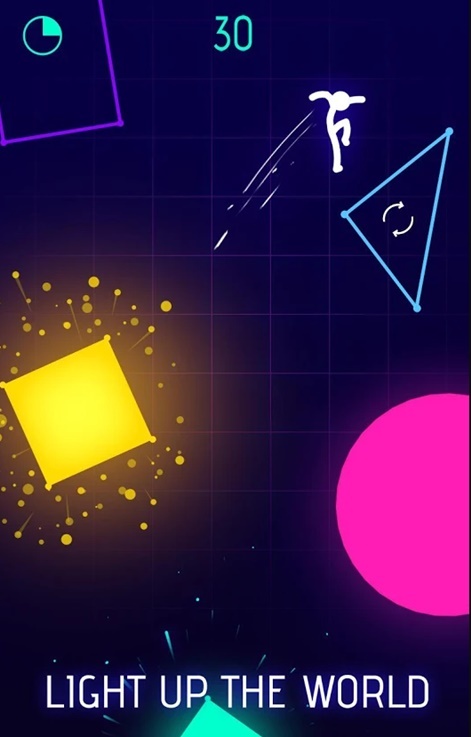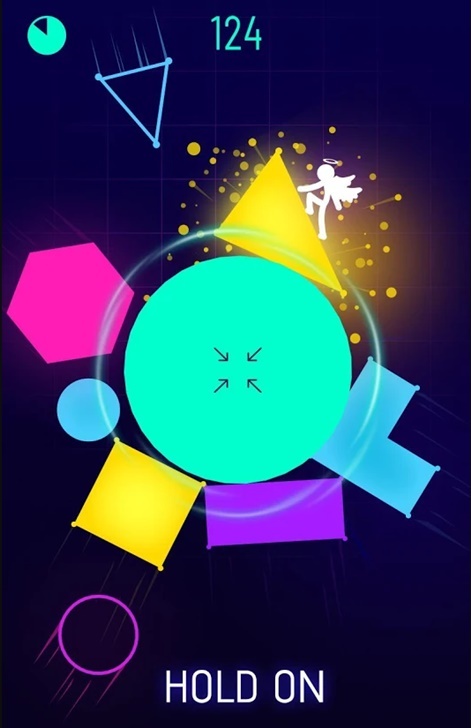As anyone giving even a cursory glance to mobile games industry trends over the last year will know: hyper-casual is one of the big buzzwords.
Casual games published at a large scale and powered by ad monetisation, companies like Voodoo, Ketchapp, Playgendary and TabTale have been at the centre of this increasingly lucrative space.
But now that everyone’s talking about hyper-casual, are there still opportunities within it?
TabTale studio manager for hyper-casual Roy Shtoyer gives the lowdown on how the genre started, what developers need to know to get in on the action, and offers a deep dive into one of its own successes in this must-read interview.
There are many ways to describe hyper-casual games. What is your view on the hyper-casual definition?
Roy Shtoyer: TabTale views all games that focus on the following design pillars and game mechanics as part of the hyper-casual genre:
- Snackable core gameplay - intuitive and can be understood in the first five seconds of a UA video
- Very easy to learn; usually one single input in terms of controls; very clear outputs
- Difficulty curve and progress that makes you feel like you’re improving at the game
- Innovative for PX sake, not for innovation’s sake
- Theme/IP has mass appeal and doesn’t specifically target a specific audience
When did the hype around hyper-casual started?
When the app stores first launched, many of the original games were designed with ‘mobile-first’ thinking, and were built according to the above-mentioned pillars. Furthermore, if you do some digging into App Store and Google Play history and you’ll find that there have always been very high performing hyper-casual games.
The chart below shows that hyper-casual has been around, generating downloads and entertaining many hearts, for a few good years now (even before anyone called them hyper-casual).

Why do you think hyper-casual games have become so popular with developers and players right now?
There are a few factors that led to the popularity of hyper-casual games:
Mobile first PX
First and foremost, from the players’ side, hyper-casual games are made more for mobile than any other game genre. They focus on core mechanics and crystal clear progressions, and there’s no endless array of features or meta-game to learn.
We see them as the best fit for a game played on a mobile device in terms of controls, sessioning and how quickly you can have a round of core gameplay.
UA
Companies like TabTale, Voodoo and others have begun to grow these games with user acquisition, generating very low CPIs, and in the case of very viral games, eCPI - which you are not going to find when you compete on the top grossing charts, hunting whales with your UA.
Viral growth
We’ve seen from our organic downloads that our most engaged players (especially the young ones) brag about their new games to their friends. It’s less likely that the top whales of the most profitable in-app games are actually going to brag about those games.
From my experience with puzzle games and social casinos, top spenders are a little embarrassed to share that they’re so addicted to a game, while younger audiences are not.
Short production cycle
The production cycle of hyper-casual games is no different in steps and stage-gates than that of a top grossing casual to midcore title. The team goes through concepting/ideation, prototyping, pre-production, soft launch and world wide release.
When it comes to hyper-casual, game teams have a much greater chance of feeling real business success.Roy Shtoyer
The scope, however, allows us to cram what typically takes one to three years into one to three months. This makes it appealing for any developers who don’t want to sink a massive amount of resources before getting a return to shift focus to hyper-casual.
Higher chance to succeed
The luxury of moving on so quickly to the next game in case of KPI failure is not something we’ve found so readily there when working on larger scoped productions. Reaching business success and getting a return in revenue for your development costs are some of the key factors that influence how well a team functions.
When it comes to hyper-casual, game teams have a much greater chance of feeling real business success. We believe that getting millions of downloads and seeing games reach the top free charts contributes to forming better game teams.
The rise of ad monetisation
When we monetise with ads, while there are many tests and optimisations we can do in terms of placements, eCPMs and rewards, there’s naturally a very different overhead of testing and optimising versus games for whales, dolphins, and converting non-spenders into spenders.
Prior to hyper-casual games, we typically required very long soft launches for in-app monetisation games to first convert enough players to spend, and then we’d develop whales at day 30 onwards, while optimising the game for the 0.19 per cent that pays 48 per cent of the salaries.
When we work on hyper-casual games, the key is actually to monetise the masses. Even though we’ve been seeing many hyper-casual publishers use in-app monetisation in very creative ways (like Bricks and Balls by Cheetah Mobile and Flippy Racer by Ketchapp), using ad monetisation is not only a way to monetise all your DAU; your learnings in one game can usually be easily applied to others.
This is not always the case for whale economy games that need very special treatment based on each game’s PX, progression and economy.
Some developers tend to move away from creating hyper-casual games due to the lack of creativity. What are your thoughts on it?
Our studio’s vision is to entertain as many hearts as possible with unforgettable player experiences and we do not take this lightly.

We believe in creating entertaining core experiences. We have an intense weekly ideation and concepting process, and then a weekly pitching meeting to see which one of those concepts goes to development.
This means a few things for our talented and creative designers -
- They are not locked into one core on which they have to build a massive meta game and make sure lasts for five to 10 years as one game in the stores.
- They have massive learnings on which cores and controls deliver the best KPIs, and, for successful games, they get to develop that core further in live ops.
- The amount of ideas the team can take and turn into core gameplay is massive. For us, it’s more fun to think of a brand-new killer core and prototype it, rather than the next obstacle/enemy/card that’s coming in the next update. Of course, we do both since we have live ops games, but if you have a creative team that’s not shy about new ideas, hyper-casual truly allows, and even demands, that their creative passion explodes every week on the daily.
Do you think hyper-casual is a sustainable, profitable market for developers? Or will it quickly close up around the big publishers?
Hyper-casual was around for years even before we called it hyper-casual and will always be around, because these are the true mobile-first games.
They aren’t designed with the idea that your most engaged players will spend a 30-minute session in bed after a few shorter sessions during the day; they truly are meant to be enjoyed on the go, waiting in line, or on a train.
When it comes to developers versus publishers, we (the publishers) are completely dependant on the beautiful games of developers, if we really want to have enough chances for success.
As long as people have mobile devices, they will always want snackable mobile-first games, which is the essence of hyper-casual.Roy Shtoyer
Even with a large internal team and many in-house productions aiming for worldwide release, we need many more soft launches if we want to be the top hyper-casual publisher.
There is no way we can do this without building long-lasting partnerships with developers that want to work together with us to develop world-class games and increase their reach to the masses.
What, if at all is going to change in hyper-casual as we enter 2019?
We predict that we’ll see more developers trying out more monetisation of in-apps in hyper-casual games to increase LTVs and allow them to scale more in terms of installs and profitability. There are already a few examples from Playgendary, Cheetah Mobile and Ketchapp.
As for sustainability, as long as people have mobile devices, they will always want snackable mobile-first games, which is the essence of hyper-casual.
How did the concept for Light-It Up! come about and what was the launch process like? Is it similar for casual titles like this as for more midcore games or different?
All of TabTale hyper-casual games have the same production processes as any non-hyper-casual game: concepting, prototyping, preprod, production, soft launch, worldwide release - with gates inbetween.
Light-It Up! came from the idea of a platformer where the user has to collect or touch all of the platforms, similar to retro games like Qbert where the user must touch all the platforms. But, we also had to think about having simple mobile-first controls.
In the pitching meeting, the game didn’t go over too well with company stakeholders or even with some members of the team.

There was skepticism as to how we could get the controls right, and questions like: is it too puzzley for a hyper-casual game? Should we make a game like this? Our answer was: well, if it’s fun, then let’s go for it.
In the end, we approved it for a very doubtful prototype. Most of the team thought it was too cumbersome to understand.
We tried a few things, but once our extremely talented designer prototyped it, nailed down the controls and allowed the character to jump through blocks and stick to them - we finally had something that the team believed in.
At TabTale, the most critical step to determining if we go to pre-production is a playable in-house prototype that must already demonstrate fun, difficulty curve and progress.
Once we saw all of that in Light-it Up!, we all started really believing in the game. We then reached soft launch with very promising KPIs, and the whole company aligned in getting the game out to the world in time for Christmas.
How has Light-It Up! performed since release?
Light-it Up! has world-class KPIs; it’s one of the best retaining games we’ve ever seen (day one 59 per ceent in tier-one territories).
We were super happy to climb to the top two most downloaded spot on December 24th and we’re still in the top 18 to 30 free iOS US today. We’re even more excited by our community and the features they’re requesting from us!
We’ve learned that you can have hyper-casual games with the retention decay curve of a top performing puzzle game.Roy Shtoyer
We have a stellar roadmap with lots of fun-filled features like new game modes, events and boosters for our shiny, happy Light-it Up! players.
We see a massive amount of players completing the level funnel in Light-It Up! compared to our other games, and it’s also our most highly ranked game on GP and the App Store in terms of star rating.
We’ve learned that you can have hyper-casual games with the retention decay curve of a top performing puzzle game, and even better, as long as you provide an entertaining enough PX.
As for the rest of your portfolio, what kind of games do you release and which have been your most successful to date?
Our most successful hyper-casual game at TabTale in terms of business impact has obviously been Run Sausage Run, which has been out for over 13 months and received 80 million downloads worldwide.
The game spent most of Christmas 2017 in the #1 free spot on the App Store, and over a month at number one on Google Play.
Throughout the year, we’ve managed to update the game and keep it bouncing back to the top spots, and we have a lot more in store for future Run Sausage Run updates.
As far as what we release: anything that’s designed around the pillars I mentioned and passes our soft launch retention and UA KPIs.
We’re not overly focused on arcade, puzzle, io or runners, because we have nine game designers on our team and we really want to shoot in all directions of fun and satisfaction.
Many of our games are somewhere between an arcade and a puzzle - in the sense that you have some time to figure out what you need to do, but once you solve the riddle (maybe by dying at first to figure out), you will probably learn and not fail on the same obstacle the next time you encounter it.
That being said, we also have games that are pure arcade, runner, etcetera.
What kind of developers and games are you looking for as part of your publishing initiative?
We are looking for developers that are hungry to learn and iterate, quick to translate data into action items, and can bring the WOW factor in the core gameplay they send us.
We don’t necessarily look for the most polished builds of a game before we can provide feedback; sometimes it’s better to receive the game in WIP state with core functionality 50 per cent done, because this typically allows us to save the developers time and let them know if we feel there is something there.
We also often attach an internal game designer to liaise with the developers we publish and help them drill down into the data, provide insights from games of our own, and try to translate their next action items into bigger success for their games.

We are very open to developers that work in engines like Build Box.
Snake VS. Colors, one of our published games, was developed in Build Box, an engine that didn’t support our SDK at the time. In cases like that, we fund the processes of migrating the game to Unity.
Our developer needed help doing that faster for Snake VS. Colors, since he is a very talented one-man-show who did all the work on the original game.
So, during the high holiday season in Israel, our internal studio chipped in and worked through the holidays to completely rebuild the game in Unity just to get it to market much faster.
We were really proud of the effort and collaboration that went on. We really managed to get the game down to the pixel and rebuild it.
We aim to build strong relationships with our developers and make sure that they succeed when publishing with us.Roy Shtoyer
In general, we are happy to work with all game engines when it comes to initial soft launches. We then work together with the developers to launch the games on engines that are supported by our SDK.
What services do you offer as a publisher for developers?
We review every build, sometimes only videos, and provide our feedback to our developers.
As a developer, you will receive a publishing manager to communicate with directly, as well as a game designer once we start developing the game together, so that we have another set of eyeballs challenging and bringing new ideas to the table.
Of course, we soft launch your game and are very transparent with the data and results, as well as with action items for improvements Then we iterate, analyse and repeat. We provide playtest videos for improving and iterating.
We have two options for working with us - revenue share and payment installments. Furthermore, as I mentioned, if we soft launch a game and see that there is a valid business model based on KPIs, we will stop at nothing to make your game go to top free - including working through the holidays to get the job done.
Finally, the most important thing is that we look for long-lasting partnerships; we aim to build strong relationships with our developers and make sure that they succeed when publishing with us, so that we remain their number one choice as a publisher.
We provide all the resources we have to make sure we’re successful - meaning sticking as many days as possible in the top free spots.
We find that the more we invest in our relationship, the better the developers become from game to game, and we all enjoy our learnings from previous games we’ve worked on before.























